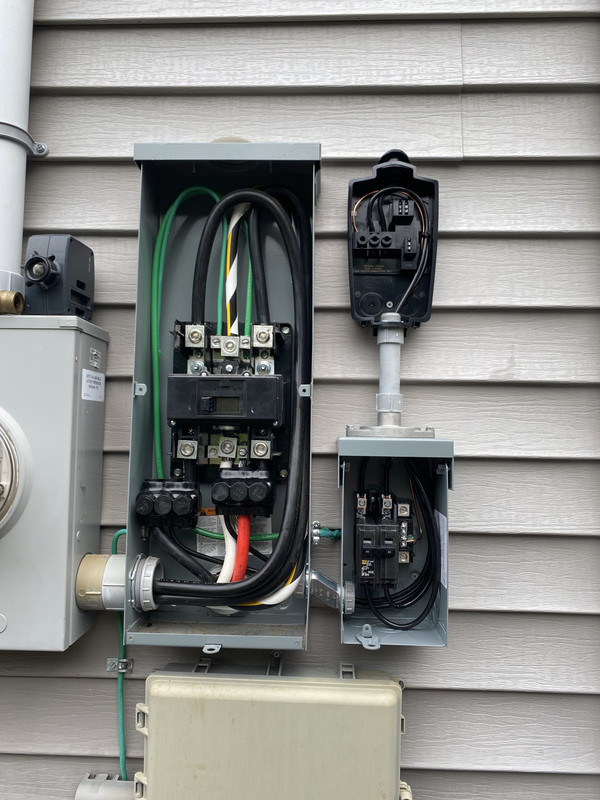Hi everyone, to give a little background I did 15 years of commercial and some industrial electrical work but most of the engineering was already done for us. Then I went on to start a residential electrical service contracting company 10 years ago. So I don’t have much practical experience with the tap rules. I would like to check my work before I call for inspection. I greatly appreciate your help letting me know if this is code compliant.
I came out of this 200 amp service disconnect with #6 cu. I installed a 60 amp breaker in the enclosure. I believe this is all compliant, but I’m eager to hear your opinions.
-To clarify a few things, this is the third generation Tesla wall connector which has a maximum charge rate of 48 A requiring a 60 amp circuit. This isn’t one of the older ones that had a maximum of 80-100A circuit.
-I realize that I forgot the plastic bushing on the PVC MA right after taking the picture, so that is fixed.
-I understand that it might not be compliant to put a PVC MA into a hub, but that is accepted here and very common.
What are your thoughts?

I came out of this 200 amp service disconnect with #6 cu. I installed a 60 amp breaker in the enclosure. I believe this is all compliant, but I’m eager to hear your opinions.
-To clarify a few things, this is the third generation Tesla wall connector which has a maximum charge rate of 48 A requiring a 60 amp circuit. This isn’t one of the older ones that had a maximum of 80-100A circuit.
-I realize that I forgot the plastic bushing on the PVC MA right after taking the picture, so that is fixed.
-I understand that it might not be compliant to put a PVC MA into a hub, but that is accepted here and very common.
What are your thoughts?


